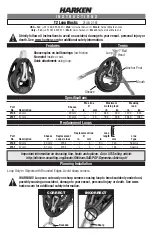
2I-10800-10
24
the crystal for sample containment. Likewise, the Arrow consumable
ATR slide system also contains a well for sample containment. There
are also the options
of the Luer Lock anvil (see “
, page 27) or the Volatiles C
over (See “
,
page 26).
9.4. Cleaning Tips
It is very important to avoid damage to the crystal materials. It may be
useful to remove the puck from the optical unit and carry it to a safe area
for cleaning in order to minimize any risk of contamination being carried
over to other components of the accessory.
Solvents such as water, methanol and acetone are suitable to use for
cleaning purposes. When wiping away any solid or liquid sample, use
very soft lens tissues to avoid scratches being caused on the surface of
the ATR crystal, particularly if using the ZnSe, Ge or Si pucks as these
crystal materials are not as resilient as diamond. Scratches and
blemishes to the ATR crystal surface will result in poor light throughput
for the ATR technique and an overall degradation in the accessories
performance.
Note:
When cleaning the flat anvil (17), do not soak the contact tip head
with solvent as this degrades the nitrile washer component.
Carefully wipe the stainless-steel tip head only using moistened
or dry tissues to clean it.
In common and general usage, it will only be necessary to wipe and
clean away at the top surface of any Quest ATR puck between samples.
Avoid getting any solvent or cleaning solution materials on the underside
of the puck. There is a risk that any dried solution components on the
underside of the ATR puck could be observed as an impurity in the
background.
9.4.1. Diamond Crystal
The diamond crystal material is much more chemically durable than
either the ZnSe, Ge or Si puck options. Therefore, if a sample is
stubbornly resistant to removal from the crystal surface, a more vigorous











































